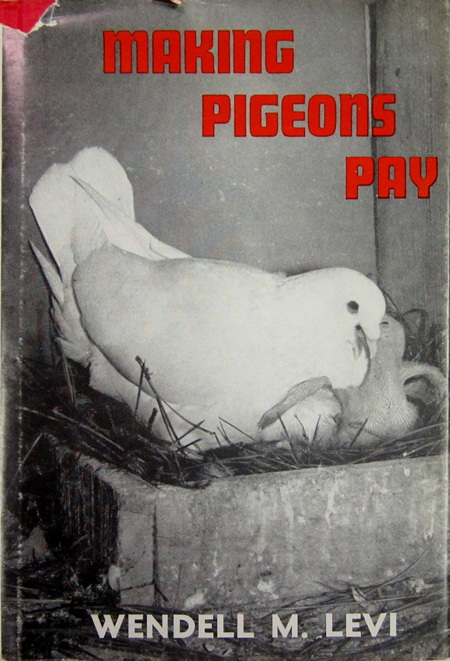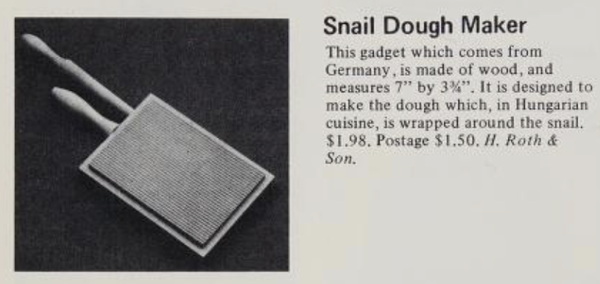Food
A case of food poisoning in Peru

Louisville Courier-Journal - Dec 4, 1972
Posted By: Alex - Fri Jun 21, 2024 -
Comments (1)
Category: Food, Poisons and Other Injurious Substances, 1970s, South America
LSD Dangers: The Hotdog
Posted By: Paul - Sun Jun 09, 2024 -
Comments (1)
Category: Anthropomorphism, Death, Drugs, Psychedelic, Food, PSA’s, 1960s
Follies of the Madmen #595
This commercial is mundane and unexceptional--barring one thing.The woman lays her poopy child directly onto one of the Bake Sale tables.
Posted By: Paul - Sun May 12, 2024 -
Comments (1)
Category: Food, Hygiene, Advertising, Babies and Toddlers, 1970s
Making Pigeons Pay
Wendell Levi's book is about how to make make money raising pigeons. Not about getting revenge on them. Though the latter would doubtless be a more interesting book.You can read the entire book for free at the Internet Archive.

Browsing through his book, I learned that squab is the term for pigeon meat. (I'm sure most WU readers knew this already, but it was news to me). I've never eaten squab. Nor can I recall ever seeing it for sale in a supermarket, or on a restaurant menu. But it's readily available online, such as at squab.com.
Posted By: Alex - Mon May 06, 2024 -
Comments (2)
Category: Food, Farming, Books
Buy bread in waxed paper
Buy bread in waxed paper and then lounge about with it while wearing a gown designed by Pauline Trigere.
Posted By: Alex - Wed Apr 24, 2024 -
Comments (0)
Category: Fashion, Food, Advertising, 1950s
Humanised Trufood
Make sure your food has been humanised...
Daily Telegraph - Jan 28, 1937

Post-Graduate Medical Journal - June 1935
Posted By: Alex - Sat Apr 06, 2024 -
Comments (6)
Category: Babies, Food, Advertising, 1930s
That’s a Lot of Lobster Rolls
Source.
Posted By: Paul - Mon Mar 25, 2024 -
Comments (0)
Category: Excess, Overkill, Hyperbole and Too Much Is Not Enough, Food, Oceans and Maritime Pursuits, 1920s
Python meat as the food of the future
Python meat is emerging as a new contender for the food of the future.A report recently published in the journal Nature argues that python meat is potentially the most sustainable source of protein because "In terms of food and protein conversion ratios, pythons outperform all mainstream agricultural species studied to date." In other words, pythons convert most of what they eat directly into meat on their body.
The authors also make the case that farming pythons is more ethical than farming chickens or cows because "Pythons don’t have the same cognitive capacity and choose to remain inactive in small confined spaces when they don’t need to find food."
More info: Nature, New Scientist
People on YouTube who have tried python uniformly report that it's chewy. So grinding it up into a burger might be the way to go.
Posted By: Alex - Sat Mar 23, 2024 -
Comments (2)
Category: Food, Farming
You’re the Judge
Posted By: Paul - Sat Mar 23, 2024 -
Comments (0)
Category: Awards, Prizes, Competitions and Contests, Domestic, Food, Advertising, Teenagers, 1960s
Snail Dough Maker
Thankfully it's for making dough to wrap snails in, rather than making dough out of snails.
source: Catalog of the Unusual (1973), by Harold H. Hart
Posted By: Alex - Sat Mar 16, 2024 -
Comments (1)
Category: Food, Technology

| Who We Are |
|---|
| Alex Boese Alex is the creator and curator of the Museum of Hoaxes. He's also the author of various weird, non-fiction, science-themed books such as Elephants on Acid and Psychedelic Apes. Paul Di Filippo Paul has been paid to put weird ideas into fictional form for over thirty years, in his career as a noted science fiction writer. He has recently begun blogging on many curious topics with three fellow writers at The Inferior 4+1. Contact Us |




